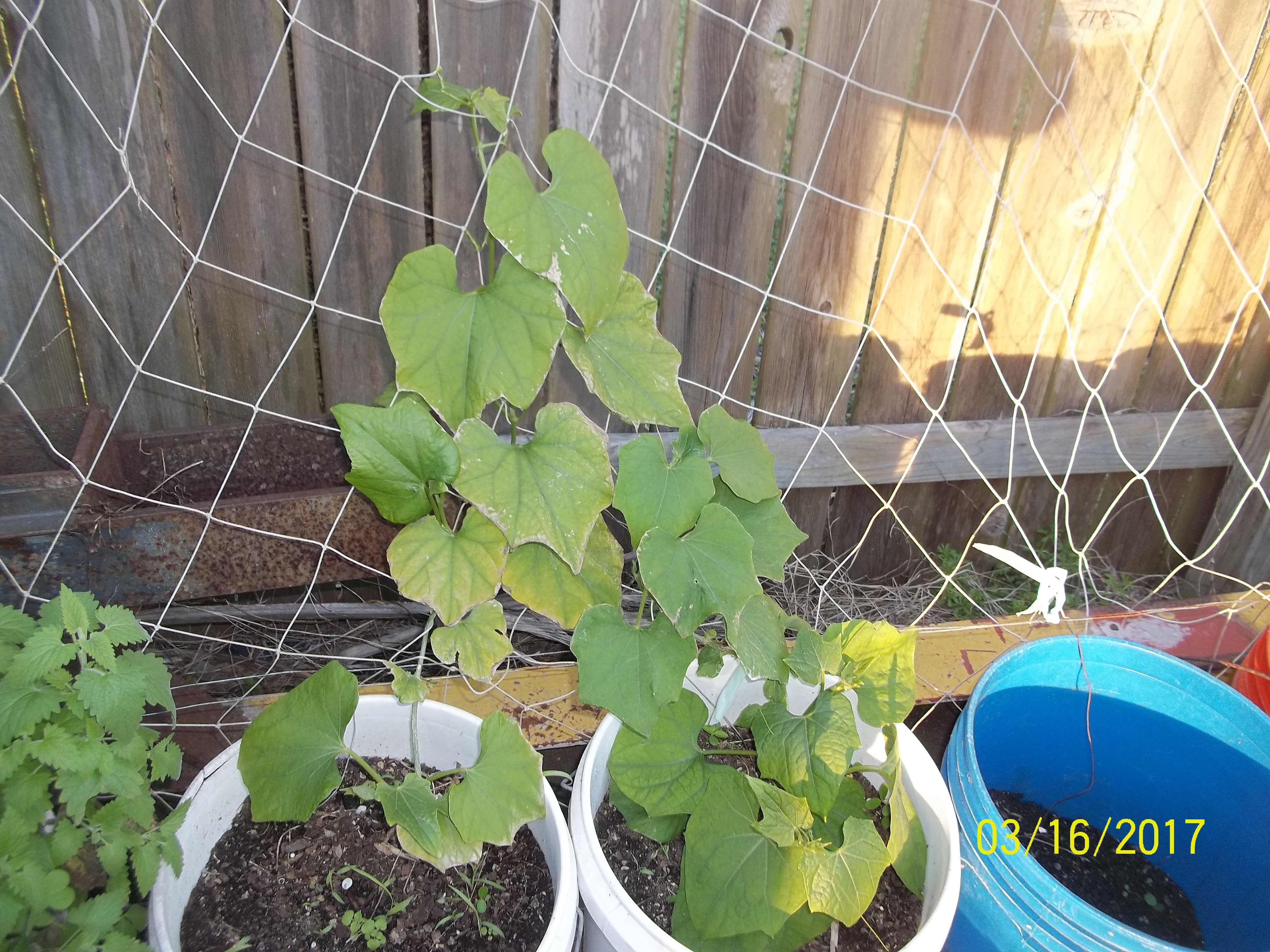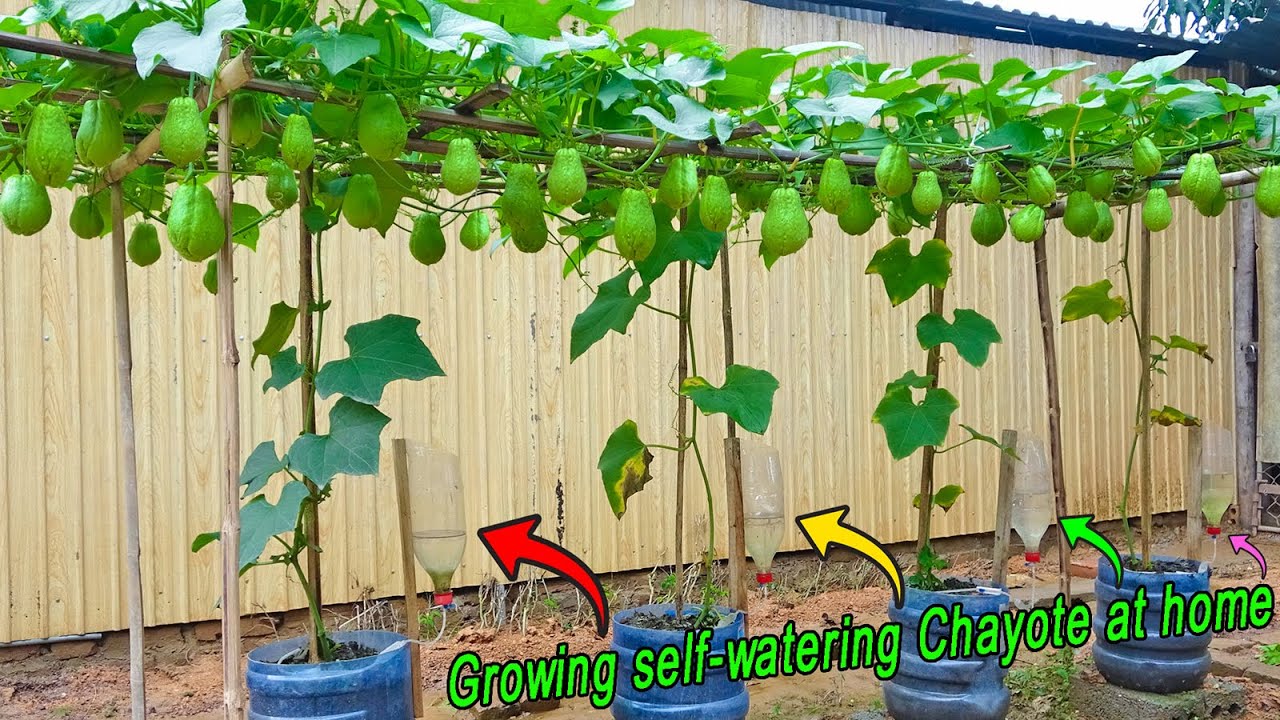To grow chayote in a container, select a large pot with good drainage and fill it with nutrient-rich soil. Plant the chayote fruit sideways, burying it about three inches deep.
Chayote, a versatile and nutritious vegetable, thrives in warm climates and can be easily grown in containers. This climbing plant produces edible fruits and leaves, making it a valuable addition to your garden. Container gardening allows you to cultivate chayote in limited spaces, such as balconies or patios.
Proper care ensures a bountiful harvest, even in urban environments. Understanding the requirements for sunlight, water, and nutrients is crucial for successful growth. With the right approach, you can enjoy fresh chayote year-round while enhancing your culinary options. Start your container garden today and experience the joy of growing your own food.

Credit: ultimatepicklejar.com
How to Grow Chayote in Container : Step by Step Guide
Introduction To Chayote Cultivation
Chayote is a green, pear-shaped vegetable. It belongs to the gourd family. This plant is easy to grow in containers. A container allows for more control over soil and water.
Container gardening offers many benefits. It saves space, making it ideal for small areas. You can move containers to find the best sunlight. This method also helps prevent pests and diseases. Container gardening improves drainage and reduces the risk of overwatering.

Credit: www.youtube.com
Selecting The Right Container
Choosing the right container is vital for growing chayote. A large container allows the roots to spread. Aim for a size of at least 5 gallons. This size ensures enough space for growth.
Materials also play a crucial role. Plastic containers are lightweight and retain moisture. Clay pots provide better airflow but can dry out faster. Make sure the container has drainage holes to prevent waterlogging.
| Material | Advantages | Disadvantages |
|---|---|---|
| Plastic | Lightweight, retains moisture | Less airflow |
| Clay | Good airflow | Dries out quickly |
Choosing Your Chayote Variety
Choosing the right Chayote variety is important for successful growth. Some popular varieties include:
- Green Chayote: Commonly found and easy to grow.
- White Chayote: Has a milder flavor and is less fibrous.
- Spineless Chayote: Easier to handle with no spines.
Climate plays a key role in the selection of varieties. Chayote thrives in warm climates. Ideal temperatures range from 65°F to 85°F. Ensure good sunlight exposure for healthy growth.
Choosing a variety suited for your climate will lead to better yields. Select based on your local weather conditions. Healthy plants will produce more delicious fruits.

Credit: www.reddit.com
Soil And Fertilizer For Healthy Growth
For growing Chayote in a container, choose a good soil mix. Combine equal parts of potting soil, compost, and perlite. This mix allows for good drainage and nutrients.
Fertilizers are important for healthy growth. Use organic fertilizers like fish emulsion or compost tea. Apply them every 4 to 6 weeks during the growing season.
| Fertilizer Type | Application Frequency |
|---|---|
| Fish Emulsion | Every 4 weeks |
| Compost Tea | Every 6 weeks |
Planting Your Chayote
To grow chayote in a container, start with healthy seeds. Choose seeds that are firm and unblemished. Soak the seeds in water for 24 hours. This helps to activate them before planting.
For planting, use a large container with good drainage. Fill it with a mix of potting soil and compost. Plant the seed horizontally, with the pointed end facing up. Cover it with about 2-3 inches of soil.
Keep the soil moist but not soggy. Place the container in a sunny spot. Chayote loves warmth and sunlight. Regularly check for pests and ensure good air circulation.
Watering And Sunlight Requirements
Chayote needs consistent watering to thrive in a container. Water the plant once a week during dry spells. Always check the soil before watering. It should feel slightly moist but not soggy.
Sunlight exposure is vital for healthy growth. Chayote loves full sun for at least 6-8 hours a day. Place the container in a sunny spot. If not enough light, the plant may grow slowly.
Pest Management And Disease Control
Chayote can face several common pests. These include aphids, spider mites, and whiteflies. Regular checks help catch these pests early. Use insecticidal soap or neem oil for treatment.
For disease prevention strategies, ensure good air circulation around plants. Avoid overwatering to prevent root rot. Rotate crops each season to reduce soil-borne diseases. Using disease-resistant varieties can also help. Keep the growing area clean and free of debris.
Harvesting And Storing Your Chayote
The best time to harvest chayote is about 4 to 6 months after planting. Look for mature fruits that are firm and green. They should feel heavy for their size. Gently twist or cut them from the vine. Always use clean tools to avoid damaging the plant.
For storage, keep chayote in a cool, dry place. A temperature between 50°F and 60°F works well. Avoid direct sunlight to prevent spoiling. Chayote can last for several weeks if stored properly. Check regularly for any signs of decay.
| Storage Method | Duration |
|---|---|
| Cool, dry place | 3-4 weeks |
| Refrigerator | Up to 2 months |
Frequently Asked Questions
How Much Sunlight Does Chayote Need?
Chayote thrives in full sunlight, requiring at least 6 to 8 hours daily. Ensure the container is placed in a well-lit area. Insufficient sunlight can hinder growth and reduce fruit production. Rotate the container occasionally to provide even light exposure.
What Type Of Soil Is Best For Chayote?
Chayote prefers well-draining, nutrient-rich soil. A mix of potting soil and compost works best. This combination ensures good aeration and moisture retention. Avoid heavy clay soils, as they can lead to root rot. Regularly check soil moisture to keep your plant healthy.
How Often Should I Water Chayote In A Container?
Water chayote regularly, ensuring the soil remains moist but not soggy. Typically, watering once or twice a week is sufficient. Adjust frequency based on weather conditions and container size. Always check the top inch of soil before watering to prevent overwatering.
When Is The Best Time To Plant Chayote?
The ideal time to plant chayote is in late spring. This timing allows the plant to grow during the warm months. Wait until the risk of frost has passed. Chayote grows best when temperatures are consistently above 60°F (15°C).
Conclusion
Growing chayote in a container is a rewarding experience. With proper care and attention, you can enjoy a bountiful harvest. Remember to provide adequate sunlight, water, and nutrients. This versatile plant thrives in limited spaces, making it perfect for small gardens.
Start your chayote journey today and savor its unique flavor!

